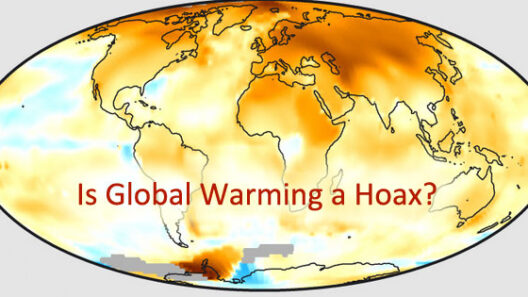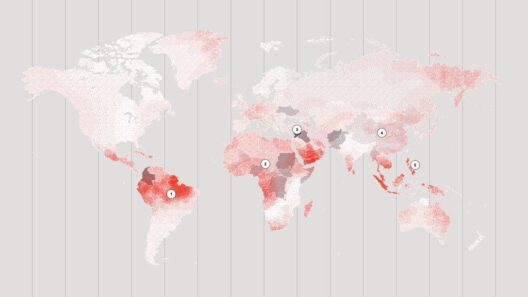Global warming has emerged as one of the most pressing challenges of our time, primarily driven by human activities that release greenhouse gases into the atmosphere. Among the myriad contributors to this phenomenon are trace gases and synthetic fertilizers, which often go unnoticed in discussions about climate change. These elements, while seemingly innocuous, play a substantial role in exacerbating the greenhouse effect. Understanding their mechanisms and impacts is crucial for mitigating climate change.
Trace gases, despite their name, have a profound influence on the environment. They exist in minimal concentrations but can significantly affect the Earth’s climate system. Notably, gases such as methane (CH₄), nitrous oxide (N₂O), and ozone (O₃) are among the most potent greenhouse gases. Methane, for example, is over 25 times more effective than carbon dioxide (CO₂) at trapping heat in the atmosphere over a 100-year period. Its emissions come largely from agricultural activities, particularly livestock digestion, rice cultivation, and landfills.
Nitrous oxide, on the other hand, is released predominantly through agricultural practices and the use of synthetic fertilizers. This gas has a global warming potential approximately 298 times that of carbon dioxide over a century. Its release occurs when fertilizers are applied to crops, leading to nitrification and denitrification processes in the soil. These biological processes convert nitrogen from fertilizers into nitrous oxide, which then escapes into the atmosphere, contributing to global warming.
The application of synthetic fertilizers has dramatically increased agricultural yield over the past several decades. While this has been beneficial for food production, it has also had deleterious effects on the environment. Synthetic fertilizers, rich in nitrogen, are widely used to enhance growth and productivity. However, their overuse can result in runoff, which leads to nutrient pollution in nearby waterways. This not only causes algal blooms but also releases more methane and nitrous oxide into the atmosphere as organic matter decomposes in oxygen-poor water.
The disparity between the benefits of synthetic fertilizer use and its environmental costs is stark. A significant portion of nitrous oxide emissions originates from nitrogen fertilizers, accounting for roughly 50% of global agricultural emissions. When these fertilizers are over-applied, they can lead to the volatilization of ammonia, which, upon reaction with atmospheric compounds, can also contribute to secondary particulate matter formation that further influences climate change.
The impact of trace gases and synthetic fertilizers extends beyond greenhouse effects. The interaction of these gases with weather patterns can lead to alterations in precipitation and temperature variations. For instance, increased methane concentrations can enhance the greenhouse effect, causing more extreme weather events, which can further destabilize agricultural practices. The feedback loop between climate change and agricultural practices is alarming, potentially leading to decreased crop yields, food insecurity, and economic instability.
Addressing the issues posed by trace gases and synthetic fertilizers requires a multi-faceted approach. Sustainable agricultural practices, such as precision farming, which tailors fertilizer application to the specific needs of crops, can minimize excess use and reduce emissions. Integrated nutrient management systems that combine organic and synthetic fertilizers can optimize productivity while being environmentally conscious.
Additionally, the promotion of organic alternatives provides another avenue for reducing the reliance on synthetic fertilizers. Organic fertilizers, derived from natural sources, not only minimize the release of trace gases but also enhance soil health and carbon sequestration. Integrated water and nutrient management strategies can aid in reducing the need for chemical fertilizers, leading to more sustainable agricultural practices.
Technological advancements also play a critical role in combating the adverse effects of trace gases. Innovations in fertilizer production, such as the development of slow-release and stabilized nitrogen fertilizers, can mitigate nitrous oxide emissions. Further research into methane inhibitors and alternative protein sources for livestock can considerably reduce methane emissions from agricultural operations.
Functioning within a broader framework offers solutions that address these challenges holistically. Policies promoting sustainable agriculture, stricter regulations on fertilizer application, and investment in research and development for eco-friendly farming practices are indispensable. These efforts must be accompanied by increased awareness among farmers and consumers about the long-term impacts of synthetic fertilizers and trace gases.
In conclusion, trace gases and synthetic fertilizers represent hidden contributors to global warming that warrant urgent attention. The impacts of their emissions are vast, influencing not only climate change and environmental health but also food security and economic stability. By adopting sustainable practices, embracing technological innovations, and fostering an informed public discourse, it is possible to mitigate the negative impacts of these gases. The journey toward a more sustainable future necessitates collaboration across all sectors, emphasizing the need for a comprehensive approach to tackling climate change and preserving the environment for generations to come.








